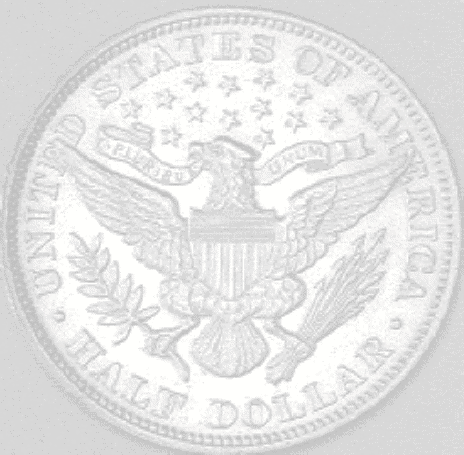
|
|
||
|
|
|
|
|
|
||

-29-
FOR BETTER OR WORSE:
The Sherman Act
Congress passed the Sherman Act on July 14, 1890. It repealed the Bland-Allison Act of 1878, and required the monthly "purchase" and coinage into "dollars" of 4,500,000 ounces of sliver bullion (“Coins and Currency”, 8). It authorized the issue of non-interest-bearing Treasury notes (“Coins and Currency”, 18) that were redeemable in gold or silver coin by the bearer upon demand, according to the discretion of the Secretary of the Treasury. "It being the established policy of the United States to maintain the two metals on a parity with each other upon the present legal ratio, or such ratio as may be provided by law" (“Coins and Currency”, 2).
The Panic Of 1893
The prediction of disaster voiced by the opponents of the Allison bill was largely forgotten. Years had rolled by and as no mischief had come, the warning was popularly ridiculed. The Sherman Act while differing somewhat from the Allison bill was essentially the same, but it provided for an even greater production of "subsidiary dollars."* While they were limited in quantity to be produced, and while the government was to receive them for public dues, it was argued they would not cause public alarm. Under the Acts of March 3, 1887 and March 3, 1891, Congress authorized the coinage of 5,078,472 standard silver "dollars" from Trade "dollars" and Trade "dollar” bullion (“Coins and Currency”, 8). However, predictions of disaster were again heard and this time gained more attention (White, 204-05).
*"Subsidiary" coinage is coinage worth a fraction of its "face" or purported value. --White, p. 35.
In 1891, more than 70,000,000 "dollars" in gold
was exported in six months. It was the largest exportation of the metal
in the history of the nation (White, 205). The Sherman Act provided for
the ”parity" of the two metals. The Parity clause authorized the
redemption in gold of both Treasury notes and silver "dollars." In order
to restrict the withdrawal of gold from the nation's vaults, the
Treasury Department under President Harrison's administration construed
the clause to apply only to Treasury notes (White, 225).
The year 1892 passed without any great
trouble, but by the beginning of 1893, there was a renewal of gold
exports on a large scale which occasioned a general feeling of alarm.
The excess over the 100,000,000 "dollar" reserve in the Treasury since
1885 for the redemption of "Greenbacks" was slight and rapidly
diminishing. John Carlisle, Secretary of Treasury, expressed doubts
whether the 100,000,000 "dollar" reserve could be lawfully used for any
other purpose (White, 207).
On April 18th, a telegram was sent to
the press from Washington implying when the excess was exhausted, the
Treasury notes of 1890 would be irredeemable in gold. While contradicted
the following day by Secretary Carlisle, the public mind was gripped
with the first signs of a panic. The same month, the reserve was tapped,
and for the first time since 1878, the Treasury had less than
100,000,000 "dollars" in gold on hand (White, 207).
